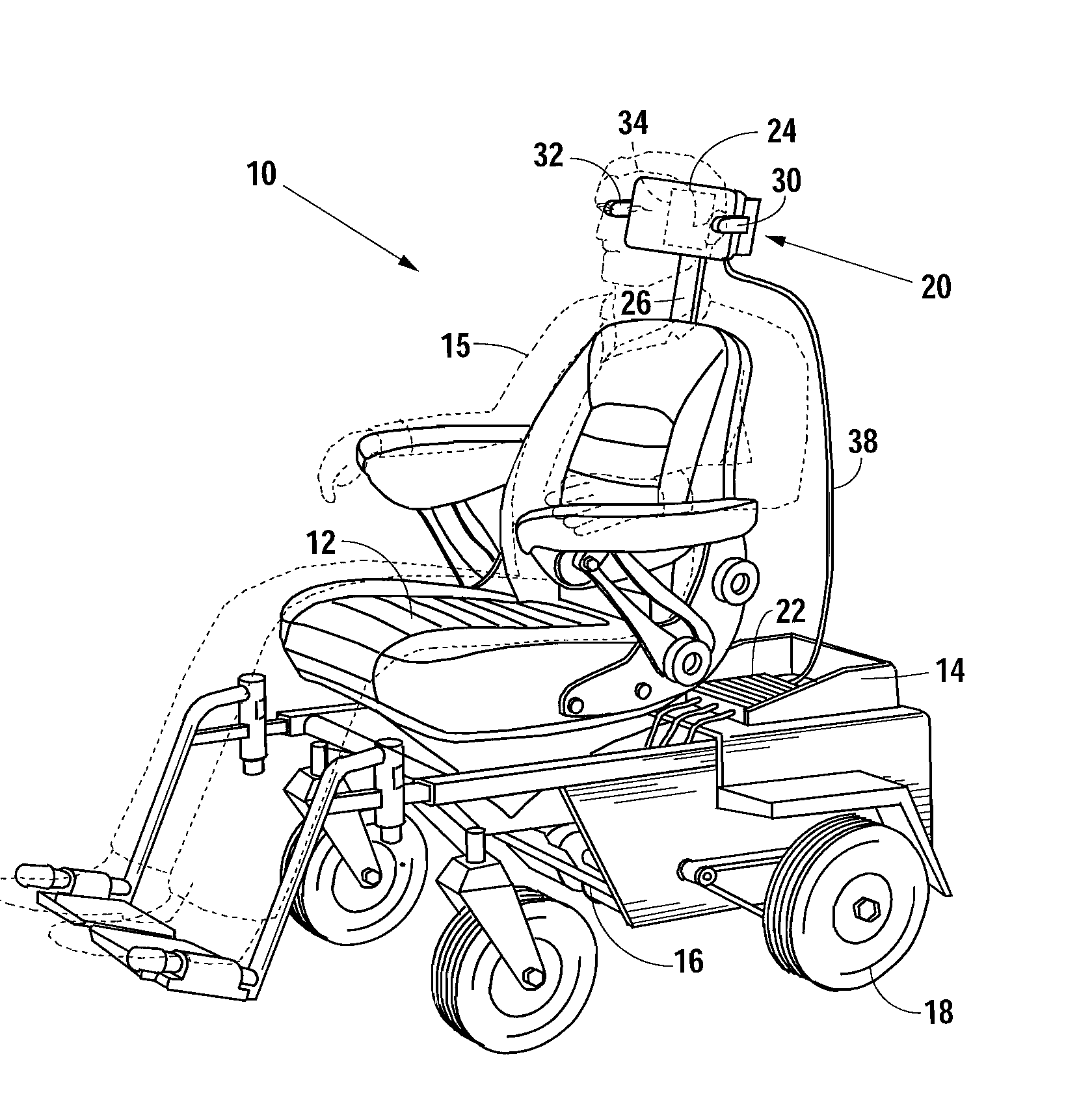Method and apparatus for electronically controlling a motorized device
a motorized device and electronic control technology, applied in the field of microprocessing devices, can solve the problems of inability to control the wheelchair, requiring contact with the body, and requiring relatively complicated circuits, and users of power wheelchairs often times do not have a great amount of control over their head (or other body parts) for controlling the wheelchair
- Summary
- Abstract
- Description
- Claims
- Application Information
AI Technical Summary
Problems solved by technology
Method used
Image
Examples
Embodiment Construction
[0025]With reference to FIG. 1, a motorized device 10 (e.g., a vehicle such as a wheelchair) according to the present invention includes a seat portion 12, which accommodates a user (e.g., a passenger) 15, a housing 14, which accommodates at least one motor 16 for moving the device 10, rear wheels 18, a sensor module 20, and a control module 22. The wheels 18 are mechanically connected to the motor 16 in a conventional manner such that the device 10 moves when the motor 16 causes the rear wheels 18 to turn. In FIG. 1 only the left rear wheel 18 is shown. However, it can be appreciated that an identical right rear wheel (not shown) is mounted opposite the left rear wheel 18. The control module 22 is electrically connected to the motor 16 such that control signals, which cause the motor 16 to turn the wheels 18 at respective speeds, are received in the motor 16 from the control module 22. The sensor module 20 electrically communicates with the control module 22. Sensor signals transmi...
PUM
 Login to View More
Login to View More Abstract
Description
Claims
Application Information
 Login to View More
Login to View More - R&D
- Intellectual Property
- Life Sciences
- Materials
- Tech Scout
- Unparalleled Data Quality
- Higher Quality Content
- 60% Fewer Hallucinations
Browse by: Latest US Patents, China's latest patents, Technical Efficacy Thesaurus, Application Domain, Technology Topic, Popular Technical Reports.
© 2025 PatSnap. All rights reserved.Legal|Privacy policy|Modern Slavery Act Transparency Statement|Sitemap|About US| Contact US: help@patsnap.com



